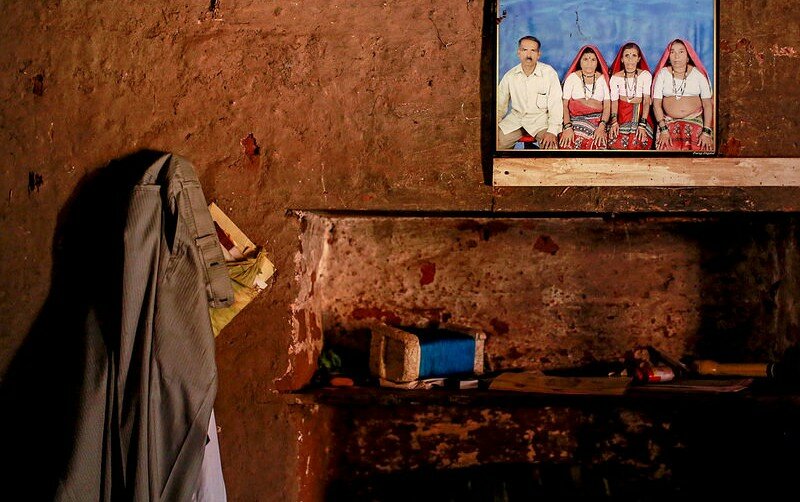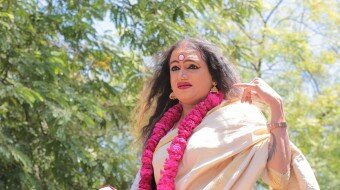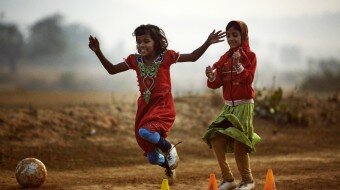Photo Credit: Danish Siddiqui
e:
In the parched village of Denganmal, in western India, there are no taps. The only drinking water comes from two wells at the foot of a nearby rocky hill, a spot so crowded that the sweltering walk and wait can take hours.
For many men in this tribal village, some 140 km from Mumbai, the solution has been to acquire a “water wife”.
A photo on the wall inside Sakharam Bhagat’s home shows three similarly dressed women of varying ages seated in a row with him at the extreme end. All of them are his wives, and they live together in the village of Denganmal, 150 km from Mumbai.

Bhagat, 66 years old, is a farmer by day and a fisherman by evening. He raises cattle, and they live a very rural existence as is a common livelihood in this village. He is content in his situation because the wives have different duties that they fulfil and all willingly.
“My first wife Tuki got pregnant soon after marriage,” says Bhagat, “Therefore it was not possible for her to fetch too much water. She also had to do all the household chores along with helping out on the farm.”
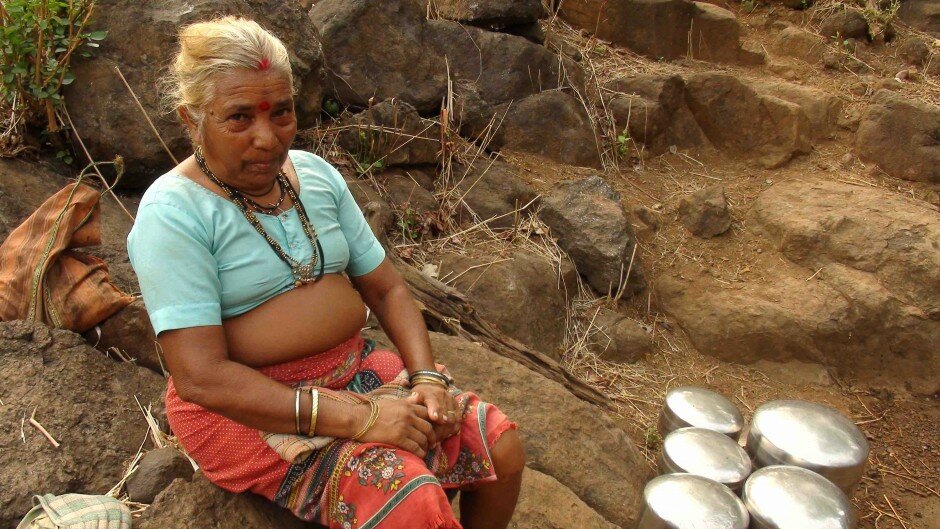
Newsivity India / Sandeep Kumar
In Denganmal, some men take a second or third wife just to make sure their households have enough drinking water. Becoming what are known as “water wives” allows the women, often widows or single mothers, to regain respect in conservative rural India by carrying water from the well quite some distance from the remote village. When the water wife, who does not usually share the marital bed, becomes too old to continue such a demanding daily task, the husband sometimes takes a third and younger spouse to fetch the water in metal pitchers or makeshift containers.
The marital arrangement does not face any resistance from the village courts because it involves the rehabilitation of Sakhri and Bhaagi, who would otherwise have had no home. But there was another reason why the village found nothing unusual about it: Bhagat was not the only man with more than one wife. Others in this village also have multiple wives, the second one usually there only to fetch water. They are called paaniwaali bars ( translated as ‘water wives’) in the region.
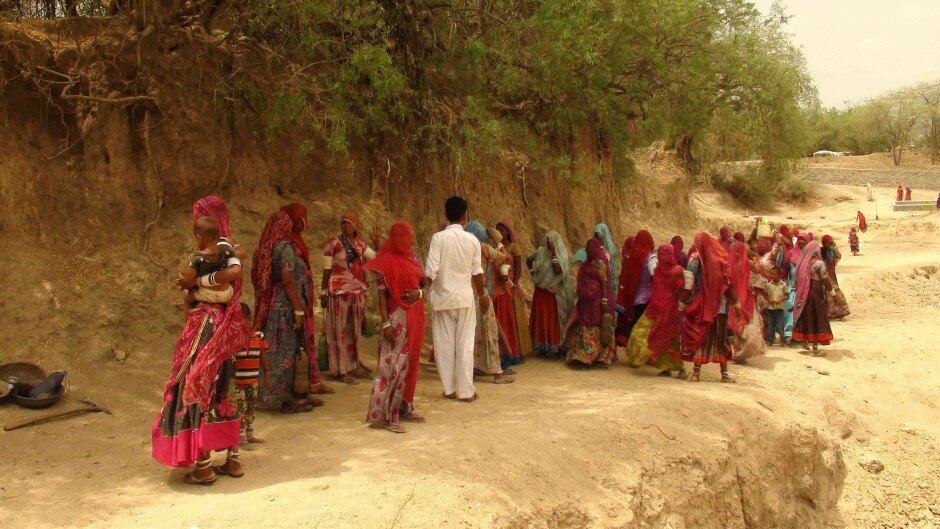
Newsivity India / Sandeep Kumar
At some point, years ago, the villagers hit upon a solution to their water woes— marry a second wife who will be tasked with making repeated treks to the dam to collect water. In return, it’s the duty and responsibility of the husband and his family to look after her and accord her the dignity of a wife. But she is not entitled to a share in the property and assets of the family, nor can she share the man’s bed so long as the first wife is alive. Because the second wife is often someone who has been abandoned by her previous husband, or a widow, she is expected to be content with a roof over her head and the social standing that comes with matrimony.
Being a ‘Water Wife’ is certainly not an easy task. The weather temperatures are an oppressive 42° Celsius, and we see a steady stream of women walking to the dam with aluminum pots perched on their heads.
“We don’t sleep at night,” says Rukhi, one of them, “We go in groups to fetch water.” In the queue for bathing, men come first, children next and then women.

Newsivity India / Sandeep Kumar
There are also health complications that the water wives must tolerate… many have irregular menstrual cycles from the excessive impact on their bodies from carrying water in such hot temperatures. Many appear malnutritioned and under weight from lack of rest. Others are also going bald with the excessive exercise causing havoc with their hormone levels and overall physical health.
A majority of the women here have low haemoglobin levels. Many of them suffer from anaemia, miscarriages, shifted fertility and menstrual cycles, apart from routine back and neck pains. Water scarcity also dictates the household routines for washing clothes in the village; daily wear is washed twice a week, while bedsheets and coverlets go unwashed for months on end.
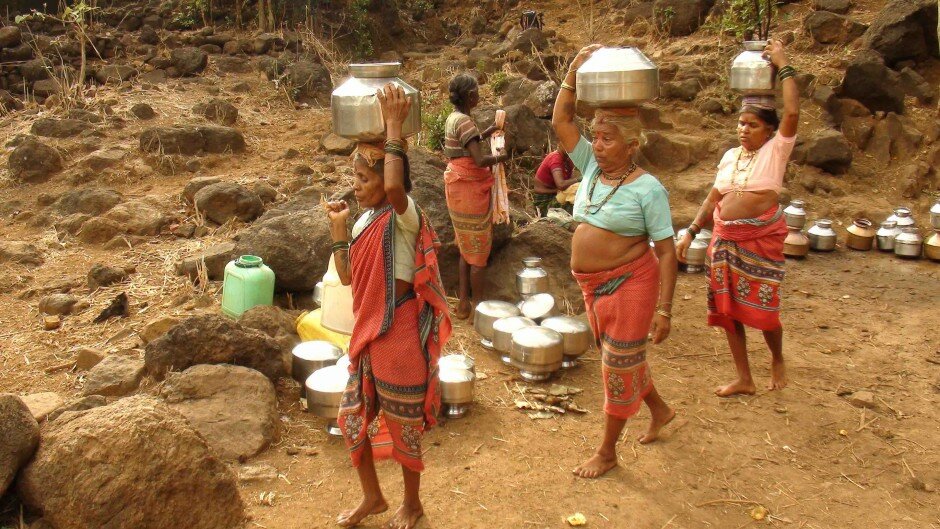
Newsivity India / Sandeep Kumar
Speaking with Sakharam Bhagat and his family, they mentioned that a while ago news teams came and covered their story and have since caused undue pressures and negative attention towards them. The focus has been on his marriage to 3 women, with little empathy for the reasons behind why this is the norm here. Lack of water is the big issue, but the mistreatment of women who are widowed or left alone is another key issue which has long been ignored. Wider society and politics has to take some responsibility for the situation here and the fact that the people have found an alternative solution to their woes, that is the secondary issue to be resolved.
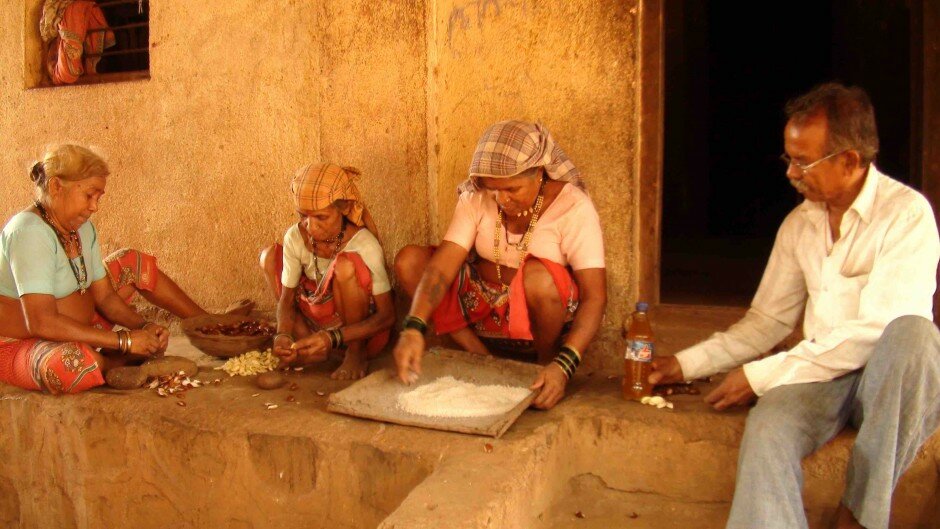
Newsivity India / Sandeep Kumar
A water tanker with a capacity of 1,000 litres arrives in the village once every five days, and the queue of both women and men who gather often gets ugly.
“Every time the tanker comes, there are fights that get really scary. Women pull each other’s hair, abuse and beat each other up. If they miss getting water from the tanker, they have to walk the mandatory 3 km. All the pent-up frustration finds a vent in the fight,” says Bhagat.
Women in the village hope that at least their daughters would have better lives if the government lays pipelines from the dam to their village. Thats the immediate resolve to this situation, and hopefully girl power will prevail for the next generation of women to stand firm in the face of outdated and unequal gender doctrines that still exist across many rural regions across India.
“We cannot do it anymore,” says Tuki, speaking on behalf of Denganmal’s women.
“We are tired of fetching water.”
Special thanks to: Sandeep Kumar ()
e:
